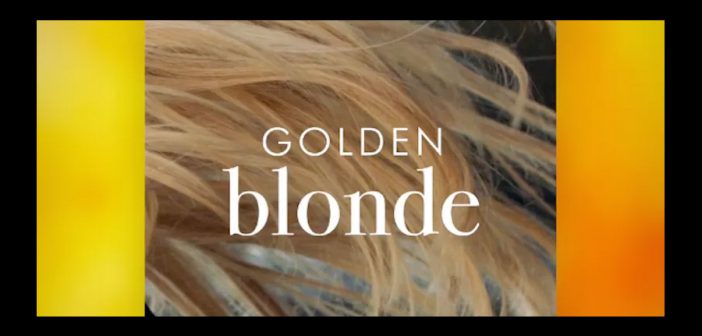In the age of ad blocking, brands are racing to create content that will get users opting in rather than out.
Personalization is a crucial part of this. And brands are mining users’ social feeds — be it Twitter, Facebook or Instagram — to create more meaningful, and tailored, campaigns.
“They’re prepared to flex their brand to fit with you and your interests; that’s how they get around the ad-blocking conundrum,” Jed Hallam, head of digital strategy at Mindshare, told Digiday.
By taking user-generated content and spinning it into a branded experience, the aim is to connect on a “macro level,” he added.
Here are five brands aiming to do just that.
John Frieda’s “Shades of Me”
Earlier this month, haircare brand John Frieda launched a campaign, “Shades of Me,” which serves users a personalized video based on their Instagram uploads. The tool scans their photos using a custom-made algorithm to find their most-used color. Then, it assigns the user several words related to that shade (blue is “mysterious,” for example).
This is combined with their hair color to create a 15-second video for them.
Create a bespoke film like @millsmackintosh & see what your shades say about you https://t.co/KZoLdtfxYK #shadesofme pic.twitter.com/rDMAqK7UnL
— John Frieda (@JohnFriedaUK) June 20, 2016
Created by the agency Brave, the campaign is running for six weeks. According to John Frieda’s digital marketing manager Alex Bradbury, it’s part of a wider push within the brand to make all communications personalized.
“Everybody wants something that nobody has; that’s the crux of it,” shen said. “They want something that’s tailored to them, something that gets a layer deeper.”
Hallam thinks the campaign is an effective one. However, having to leave the platform and go to a microsite can weaken the customer experience even as it allows the brand more functionality.
Dove’s “Speak Beautiful”
Dove delved into users’ Twitter timelines for its latest #SpeakBeautiful campaign — another in its long line of body-positive activations.
According to Dove’s research, 72 percent of girls receive negative comments weekly, but 80 percent of women’s body-shaming tweets are about themselves.
Those who retweeted the brand’s message (below) were given a custom report about their own emotional state on the platform. In this report, they could see the percentage of positive vs. negative tweets overall and on the subject of beauty.
Women everywhere are learning about their #SpeakBeautiful Effect. RT this Tweet to get your custom Twitter analysis! pic.twitter.com/CbeiyJGHai
— Dove (@Dove) March 12, 2016
Callum McCahon, a senior strategist at agency Born Social, said the campaign was effective as it is tech-driven without being gimmicky. It’s also consistent with the brand’s body-positive image.
“The promise of social media was always that you don’t have to do a one-size-fits-all campaign like TV,” he said. “Incentivizing user-generated content gives people something they want to share, which is the richest tool for engagement.”
This is similar to Snapchat’s geofilter function, which gives users something functional to create their own content without being overtly branded.
Virgin Atlantic’s “One Day”
Virgin Atlantic tapped into users’ Twitter archives for its riff on making dream holidays happen (i.e., making “one day” today).
The airline used tweets from users’ Twitter feeds to display on its out-of-home billboards. Those who saw their own tweet — where they had pondered flying somewhere exciting — in the 30-second spot could then claim a prize with the brand.
Once claimed, the Twitter user would be contacted with the destination chosen for them and details of their flight.
Roztayger’s style advice
The luxury bag retailer is using the artificial intelligence of IBM’s Watson to analyze users’ social feeds. From this information, Roztayger can match each user with five designers on the site according to their personality type. All the software needs is their gender, a social feed and an (optional) 200-word bio about them.
Leo Burnett’s futures director Chris Walts says we’ll see more tools like this pop up. For him, they represent a “second wave” of the 2010-era Facebook campaigns which plugged into users’ images and profile data like the “Take this Lollipop” video.
“We’ll see more personalized campaigns, whether that’s ‘passive’ tweets or product recommendations based on selfies,” he said. “What’s really exciting is the passive nature of it, as you don’t have to plug in too much info.”
How to be Single‘s “My Squad”
Warner Brothers Pictures teamed up with social video-maker EchoMany earlier this year to create a trailer that can be personalized to its viewer.
Users who tweeted the film’s handle with the details of their friendship group, or squad, received a video that drew their information into the title sequence, including their name and the Twitter handles of their friends.
@AlexaCz you and your besties have your very own #HowToBeSingle trailer! #MySquad pic.twitter.com/SYlxuVA1wo
— How To Be Single (@HTBSSquad) February 3, 2016
The campaign follows Fox’s #BringHimHome campaign for the film “The Martian” last year, which created customized trailers ahead of the film’s release.
This article first appeared in www.digiday.com




